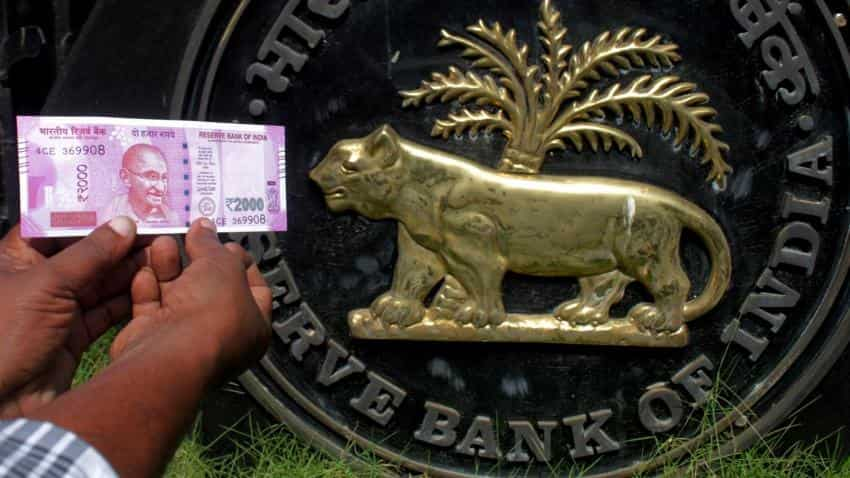Giving more power RBI an important step; implementation face challenges: Fitch
“The increased powers given to the Reserve Bank of India (RBI) to clean up asset quality, and to intervene in banks at an earlier stage when risks build, represents an important positive step toward ensuring a healthy banking system in the future,” Fitch said.

Recent actions of the Reserve Bank of India (RBI) in solving the non-performing assets problem is considered as a concerted push, Fitch Ratings said.
Fitch Ratings, in its report on Friday, said, “We believe that asset resolution will be a dominant theme in the sector over the next few years.”
“The increased powers given to the Reserve Bank of India (RBI) to clean up asset quality, and to intervene in banks at an earlier stage when risks build, represents an important positive step toward ensuring a healthy banking system in the future,” Fitch said.
The central bank will also direct banks to initiate insolvency proceedings with respect to specific borrowers who are in default, and can appoint advisory committees to advise banks on the resolution of stressed assets.
Fitch said, "RBI direction that pushes banks into initiating insolvency processes against borrowers could help to break a deadlock caused by concerns among bank officials that decisions on troubled borrowers will attract investigation by anti-corruption agencies."
However, at the same time Fitch stated that there will be significant implementation challenges, but asset resolution is likely to strengthen over the next few years.
Fitch said the NPA resolution will require significant haircuts if the re-priced loans are to attract attention from private investors and asset-reconstruction companies.
At present, state-owned banks have a huge amount of stressed assets which is why they will witness low returns on assets for FY17, and any material recovery would be delayed as resolution crystallises losses and forces a higher level of provisioning.
Gross NPAs which stood at Rs 1.3 lakh crore as on March 2012, have increased by a whopping 438.46% to Rs 7 lakh crore as on December 2016.
As per the Economic Survey, gross NPAs climbed to almost 12% of gross advances for public sector banks at end-September 2016.
Furthermore, in case of the weakest small-to-medium sized state banks, the continuous losses arising from stressed assets could pressure them to shrink or eventually exit the system by entering into forced mergers.
Fitch said, "We expect the authorities to manage this in a way that is least disruptive for the financial system, but the process will entail risks for investors of capital securities, at least in the case of weakest banks. We believe it has become more likely that the number of state banks will fall in the medium term."
Get Latest Business News, Stock Market Updates and Videos; Check your tax outgo through Income Tax Calculator and save money through our Personal Finance coverage. Check Business Breaking News Live on Zee Business Twitter and Facebook. Subscribe on YouTube.
RECOMMENDED STORIES

Retirement Planning: SIP+SWP combination; Rs 15,000 monthly SIP for 25 years and then Rs 1,52,000 monthly income for 30 years

Top Gold ETF vs Top Large Cap Mutual Fund 10-year Return Calculator: Which has given higher return on Rs 11 lakh investment; see calculations

Retirement Calculator: 40 years of age, Rs 50,000 monthly expenses; what should be retirement corpus and monthly investment

SBI 444-day FD vs Union Bank of India 333-day FD: Know maturity amount on Rs 4 lakh and Rs 8 lakh investments for general and senior citizens

EPF vs SIP vs PPF Calculator: Rs 12,000 monthly investment for 30 years; which can create highest retirement corpus

Home loan EMI vs Mutual Fund SIP Calculator: Rs 70 lakh home loan EMI for 20 years or SIP equal to EMI for 10 years; which can be easier route to buy home; know maths
02:35 PM IST










 Rupee settles on flat note, rises 1 paisa to 84.07 against US dollar
Rupee settles on flat note, rises 1 paisa to 84.07 against US dollar  Retail inflation likely to average 4.5% in FY25: RBI Deputy Governor
Retail inflation likely to average 4.5% in FY25: RBI Deputy Governor RBI imposes Rs 28.30 lakh fine on SG Finserve
RBI imposes Rs 28.30 lakh fine on SG Finserve RBI clears appointment of Partha Pratim Sengupta as MD and CEO of Bandhan Bank
RBI clears appointment of Partha Pratim Sengupta as MD and CEO of Bandhan Bank  Government appoints Ram Singh, Saugata Bhattacharya, Nagesh Kumar as RBI MPC members
Government appoints Ram Singh, Saugata Bhattacharya, Nagesh Kumar as RBI MPC members